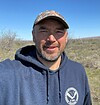According to the Department of Energy, a “critical mineral” is defined as “any mineral, element, substance, or material designated as critical by the Secretary of the Interior.” The label frames dangerous extractive practices as being essential to mineral demand in the U.S. and necessary for the transition to renewable energy.
The definition of "critical mineral" threatens to reduce environmental and community health protections and evade environmental oversight. Lawmakers across the country have introduced industry-backed policies that camouflage harmful extractive practices as necessary for national security.
In this webinar, CHE-Alaska was joined by Bonnie Gestring and Austin Ahmasuk to discuss the false framework of strategic minerals and how the mining industry uses this terminology to evade environmental impact reviews, permitting, and public comment processes.
Featured Speakers
 Austin Ahmasuk is Environmental Justice Co-Director with Native Movement where he works to secure greater equity and justice for Indigenous communities. A life of fishing, hunting, and trapping has given him traditional knowledge experience and connections to tribal communities in Alaska.
Austin Ahmasuk is Environmental Justice Co-Director with Native Movement where he works to secure greater equity and justice for Indigenous communities. A life of fishing, hunting, and trapping has given him traditional knowledge experience and connections to tribal communities in Alaska.

Bonnie Gestring, MS is Northwest Program Director for Earthworks where she leads Earthworks’ efforts to protect the environment from adverse effects of mining in Montana, Oregon, Idaho, Alaska and Washington states.
 This webinar was hosted by the CHE-Alaska Partnership, which is coordinated by Alaska Community Action on Toxics (ACAT). Driven by a core belief in environmental justice, ACAT empowers communities to eliminate exposure to toxics through collaborative research, shared science, education, organizing, and advocacy.
This webinar was hosted by the CHE-Alaska Partnership, which is coordinated by Alaska Community Action on Toxics (ACAT). Driven by a core belief in environmental justice, ACAT empowers communities to eliminate exposure to toxics through collaborative research, shared science, education, organizing, and advocacy.
